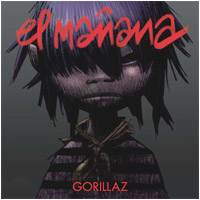And so I'll just go and say: Why the hell not?
In their early years, it would be hard to classify either field as art. And yet animation managed to make itself stand out in its infancy with Winsor McCay's famous short/performance, Gertie the Dinosaur. Do a little research if you don't know anything about Gertie; the entire premise is genious and it's a shame that anything like it has ever been replicated.
Animation itself was also limited by the early limits of film itself. Low budgets, deteriorating film, no color and no sound presented obstacles to those with big ideas, and they had to find clever ways to get around them. Nowadays we have digital surround sound, multimillion dollar budgets, high-definition color, and several totally different techniques for animating. Quite a difference.
Quite a difference, too, is what a 30-year difference makes for the video game industry. Pong is not really art. Sure, anything can be called art, but calling Pong that is like calling a kindergartner's crayon scribbles a modern masterpiece. But yet, when you stop and think about it, Pong is art in its own weird way, because it was not only a technological marvel but launched an industry that would lead to truly amazing ideas. It's essentially the seed of a plant.
With animation, the amount of expression and originality has always been totally dependent on the animator and writer. There are now few limits to what can't be done (outside the realm of censorship) because of the techniques and technology available. For games, on the other hand, there are still many limits. Even with all the big features of the Xbox 360 and PS3 being touted, processors are not yet able to handle realtime graphics on the same level as that of a professional CG production. But that is not the only thing- so many aspects of the fact that video games are interactive are actually still holding the industry back. For example, it is simply too costly to have all the dialogue be voice-acted and given lip sync and unique body/face motions for every bit of most 20-30 hour games. It's things like this that prove the industry is still in its infancy.
But the question remains for some: Is it art?
Animation can easily be proven as an art form. One of Walt Disney's driving forces behind Fantasia was to combine visuals and audio like never before, not deliver the same slapstick or fairy-tale adaptations the studio was known for. While there are many who will make an animated project just because it "looks cool" (Think about how many imitation anime ads you've seen), there are also many projects that people do because it would be impossible to pull off in live-action. Cartoons are a way to pull off what you can't do in real life.
And video games? They're a way to escape, in the vein of books. Yes, reading Catcher in the Rye and playing Halo are obviously two different types of experiences, but they're both examples of how one can roleplay. Maybe people who didn't grow up with them in this day and age will never show interest, but I believe this will eventually change.
 On a side note, anyone who has a remote interest in animated music videos (I certainly do) should check out the Gorillaz' latest, El Manana. This is how I like videos to be done- the atmosphere of the video goes very well with the song.
On a side note, anyone who has a remote interest in animated music videos (I certainly do) should check out the Gorillaz' latest, El Manana. This is how I like videos to be done- the atmosphere of the video goes very well with the song.
No comments:
Post a Comment